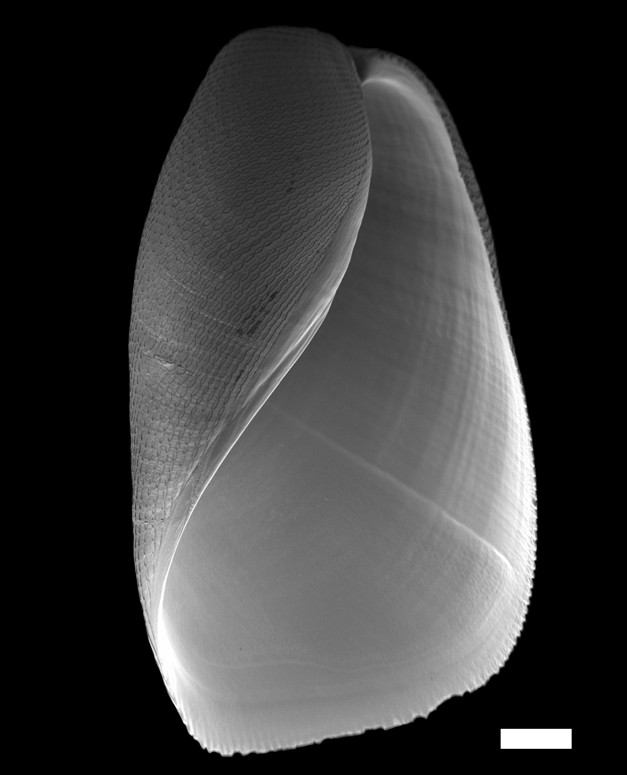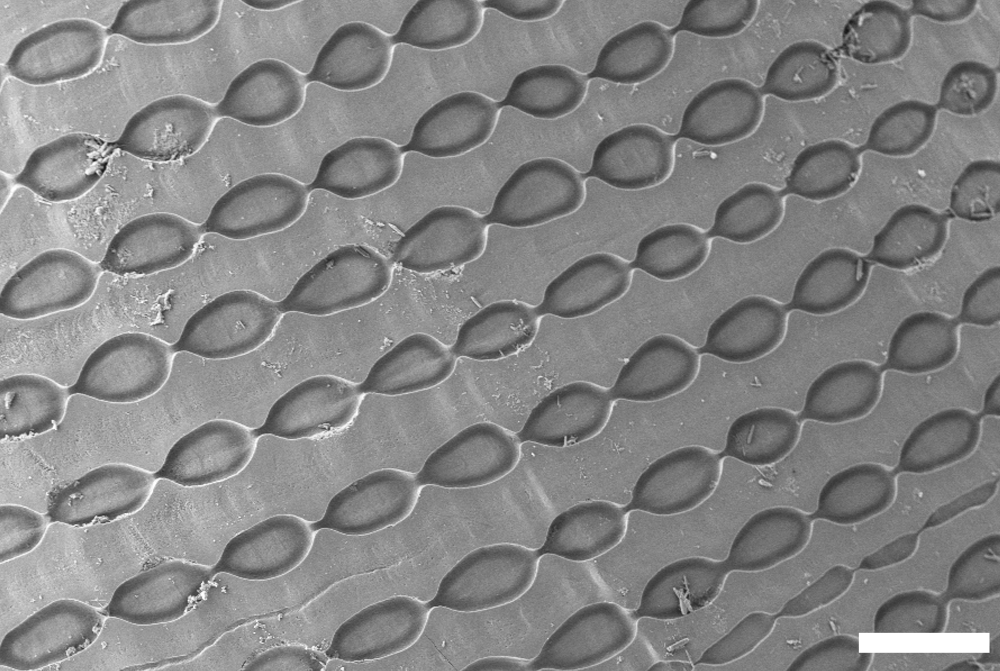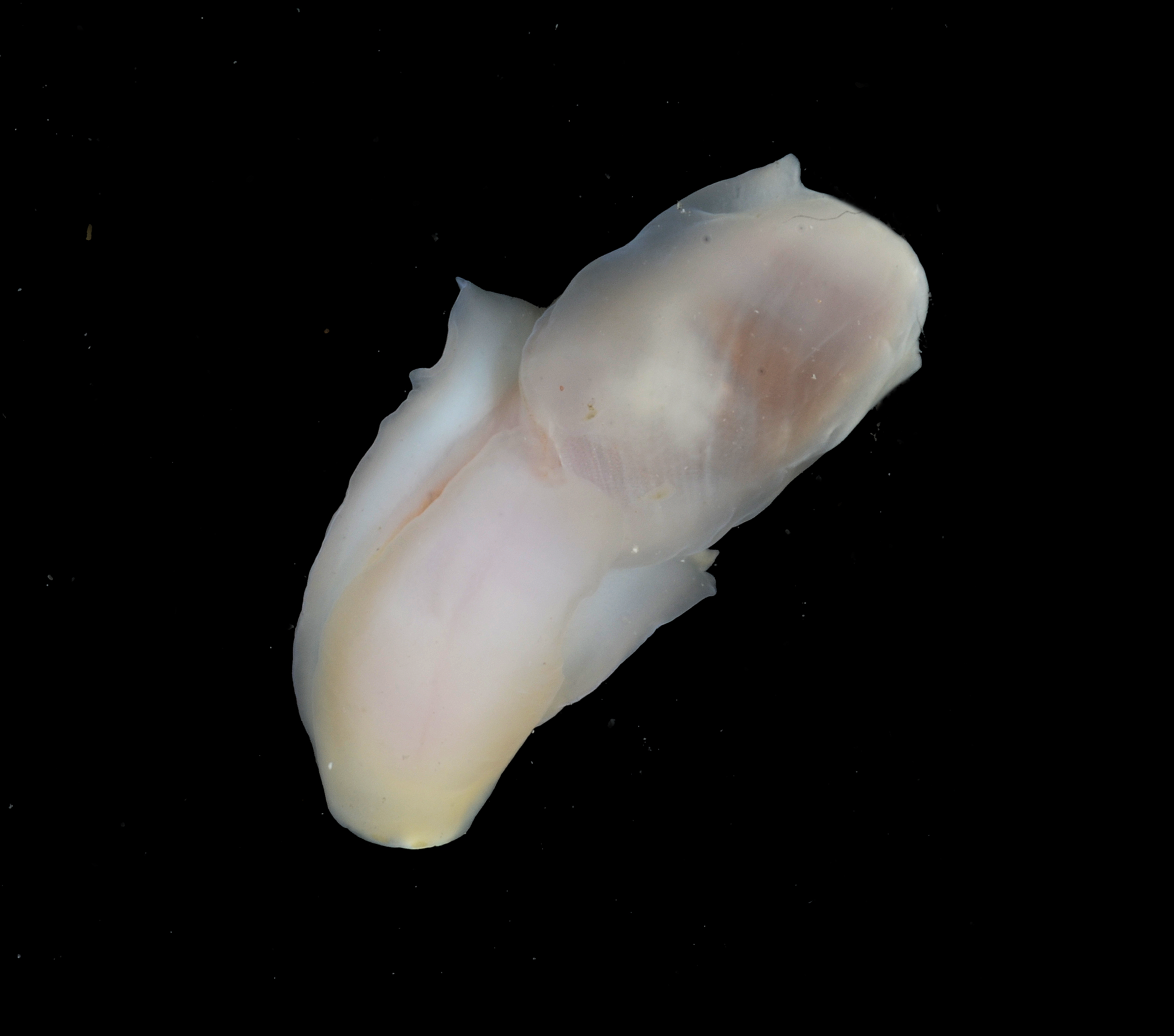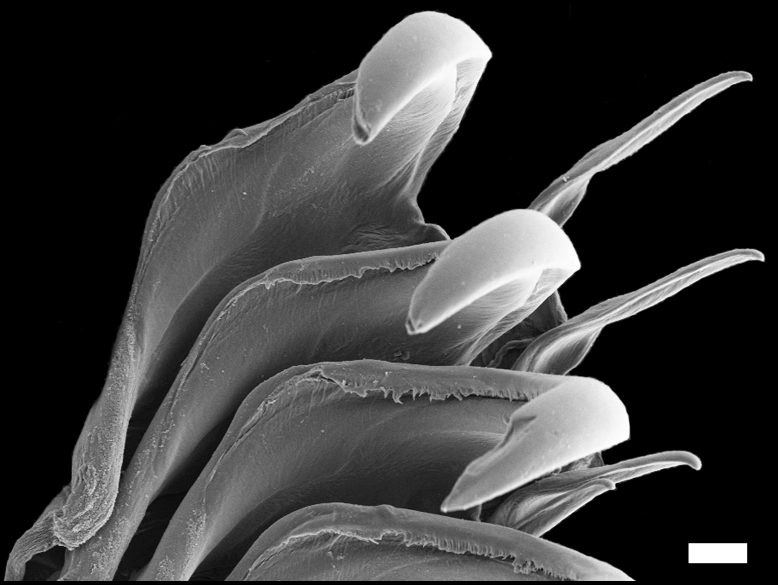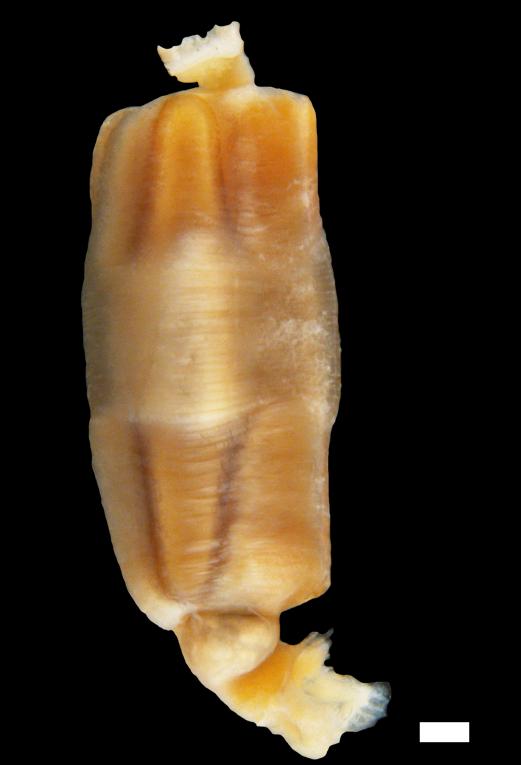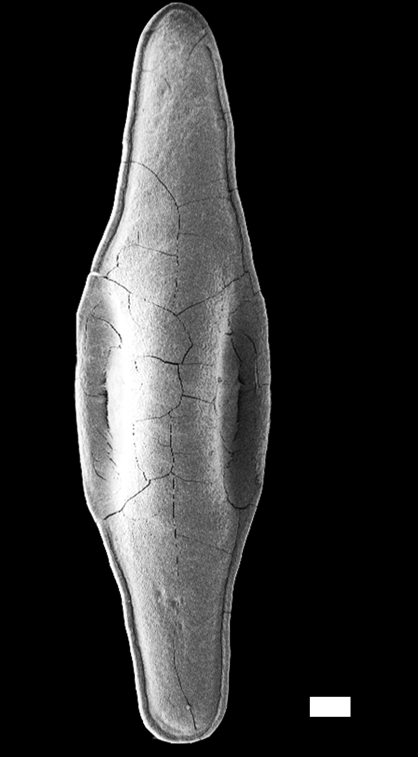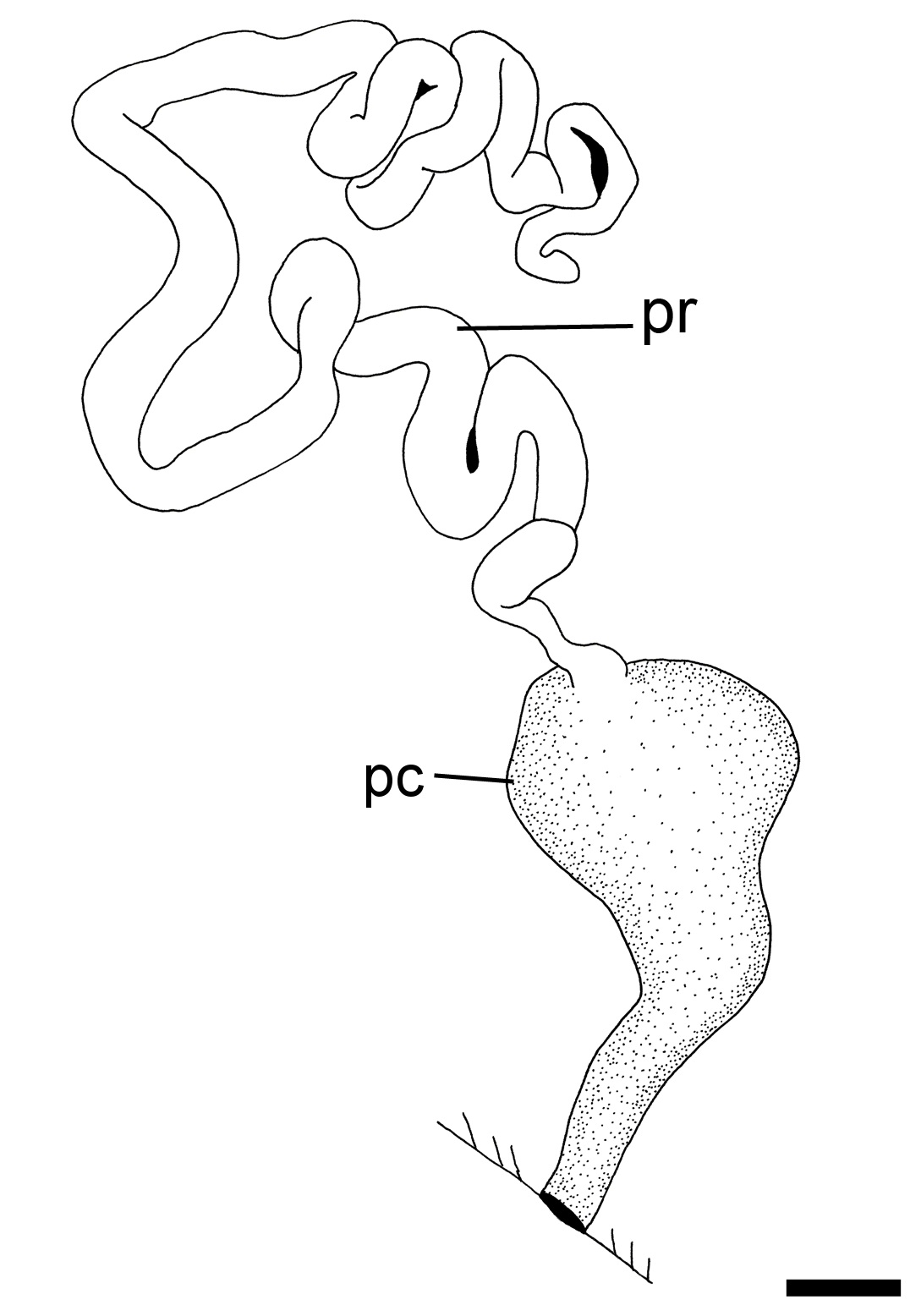Hermania scabra
Shell description
The thin shell is internal and transparent. The shell is cylindrical and elongate-oval in shape when viewed from above. The opening is wide and the edge is wavy (scalloped). The top of the shell (apex) is blunted. The shell is not umbilicated. The pattern of the shell consists of pits that are fused to form chainlike lines. The size of the shell varies between 1.7–3 mm.
Animal description
The body is white in colour. The head shield is indented with a middle groove present, and the tissue covering the shell (mantle) is thick. There are side extensions of the foot (parapodial lobes). This species is externally undistinguishable from its sister species Philine indistincta, however they have different internal anatomy.
Anatomy
The radula consists of 17–22 rows of teeth, with one outer lateral tooth and one inner lateral tooth on each side. The central (rachidian) tooth is absent. The outer lateral teeth are straight to curved wit rounded tips and a broad base. The inner lateral teeth are curved with flattened tips and a broad base. The salivary glands are slightly longer than the part of the foregut carrying the radula (buccal mass).The gizzard is elongate cylindrical, surrounded by muscle fibres and is especially thick in the middle and contains plates. The gizzard plates are identical and spindle shaped, the surface of the plates is amber in colours. The underside of the plates is whitish in colour and has two slits and a transparent margin. The prostate is long and thin emerging from a sack-like penial sheath that narrows towards genital opening.
Ecology
Specimens are found down to 900 m on sand, sand mixed with shell-gravel, fine shell sand, coarse scree, and mud. Foraminiferans have occasionally been found in the gizzard.
Geographical distribution
Present in Greenland, Iceland, Norway south of Hammerfest, Sweden. From the British Isles to the Mediterranean Sea, Madeira, and West Africa.
References
Ohnheiser LT og Malaquias MAE (2013). Systematic revision of the gastropod family Philinidae (Mollusca: Cephalaspidea) in the northeast Atlantic Ocean with emphasis on the Scandinavian peninsula. Zoological Journal of the Linnean Society 167(2): 273-326. DOI: 10.1111/zoj.12000.

